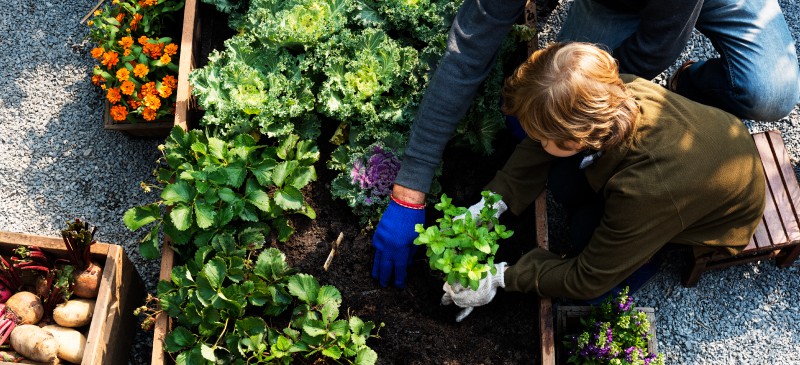This Dr. Axe content is medically reviewed or fact checked to ensure factually accurate information.
With strict editorial sourcing guidelines, we only link to academic research institutions, reputable media sites and, when research is available, medically peer-reviewed studies. Note that the numbers in parentheses (1, 2, etc.) are clickable links to these studies.
The information in our articles is NOT intended to replace a one-on-one relationship with a qualified health care professional and is not intended as medical advice.
This article is based on scientific evidence, written by experts and fact checked by our trained editorial staff. Note that the numbers in parentheses (1, 2, etc.) are clickable links to medically peer-reviewed studies.
Our team includes licensed nutritionists and dietitians, certified health education specialists, as well as certified strength and conditioning specialists, personal trainers and corrective exercise specialists. Our team aims to be not only thorough with its research, but also objective and unbiased.
The information in our articles is NOT intended to replace a one-on-one relationship with a qualified health care professional and is not intended as medical advice.
Victory Gardens Benefit Your Health, Wallet and the Environment
August 7, 2021

In the early 1900s, gardening was considered a civic duty. During World War I, Americans were urged to grow food wherever possible, from backyards and empty lots to rooftops. Growing “victory gardens,” as they were called, was a way to prevent starvation and gain self sufficiency.
The ability to harvest your own food during a period of such scarcity was valued and, frankly, demanded.
The call for growing victory gardens returned again during World War II. At one point during the 1940s, it was estimated that 40 percent of the U.S.’s vegetables were produced by home, community and school gardens.
Much more recently, home vegetable gardens made another comeback as Americans turned to home growing to avoid crowded grocery stores during the pandemic. People have also been concerned about disruptions to the food supply and the affordability of fresh vegetables.
To boot, many have had more time at home to tend to their gardens.
What Are Victory Gardens?
Victory gardens are home or community vegetable gardens that are planted and maintained by residents. Each garden looks a little different, with some planted in backyards, others in greenhouses and some in larger community gardens.
The idea is to create a space that will produce fresh, organic produce for you, your family and neighbors.
Although the concept of a victory garden originated during WWI to prevent vegetable scarcity and ensure there was enough produce for soldiers, the general idea is similar today. Growing your own garden enables self-sufficiency, reduces the use of environmental chemicals and saves you money at the grocery store.
Related: Regenerative Agriculture: Principles, Pioneers + Does It Really Work?
How to Start One
First, pick your plot of land or small gardening area. This can even be in containers or window boxes.
Make sure you choose an area that gets at least a few hours of sunlight per day and has soil that drains well. You want to avoid soggy areas that don’t offer enough soil drainage and direct sunlight.
Once you select your area, add in a good amount of compost. Use a shovel to loosen up your existing soil, and mix in the compost.
Instead of purchasing compost, you can use DIY compost that’s simple to make and only requires that you add brown and green materials (like grass clippings, veggie scraps and coffee grounds) and keep it moist.
What to Grow
For beginners, the key is to choose vegetables, herbs and some fruits that are easy to grow and require only a few hours of sunlight. Pick the foods that you love most and will be able to add to your weekly recipes.
Some of the best foods for your victory garden include:
- Cabbage
- Kale
- Spinach
- Swiss chard
- Kohlrabi
- Beets
- Turnips
- Carrots
- Onions
- Garlic
- Parsnips
- Basil
- Parsley
- Thyme
- Strawberries
- Blueberries
- Raspberries
Tomatoes are another good option, but they need to be in an area that gets plenty of direct sunlight. When it comes to growing your own fruit, it will likely take a few years for a fruit tree to start producing, so plant and be patient.
Related: The Many Benefits of Permaculture (And Why We Need it to Feed the World)
Benefits
1. Provide Fresh, Organic Produce
It can be hard to find fresh, organic produce, so why not grow it yourself? You’ll be able to ensure that no harmful chemicals were used on your plants, and you can harvest and eat them at the peak of freshness.
Easy access to fresh fruits and vegetables will also improve your overall diet and help you maintain a healthy weight. In a 2020 online survey that included U.S. adults ages 18-75, results showed that those with home gardens were less likely to be obese and more likely to meet dietary recommendations for fruit and vegetable intake.
2. Reduce Food Costs
It’s no secret that buying high-quality, organic produce can be costly compared to conventionally grown fruits and vegetables. Growing some veggies at home can help reduce your overall grocery bill, while improving the quality of the produce you consume regularly.
3. Provide Physical Activity
One of the greatest benefits of victory gardens is the exercise that’s needed to maintain the space. Gardening is an enjoyable way to move your body daily, and it’s beneficial for your mental health, too.
A 2018 study assessed the success of mentored home-based vegetable gardening intervention among breast cancer survivors. Researchers found that compared with the controls, the intervention participants reported significantly greater improvements in moderate physical activity, and home gardening helped improve health behaviors, including vegetable consumption.
4. Benefit the Environment
Keeping an organic garden that doesn’t require the use the pesticides, herbicides and chemical fertilizers is not only better for your health, but it’s better for the environment, too. It positively contributes to the natural ecosystem and doesn’t lead to storm runoff of harmful toxins that enter our water systems.
5. Spread the Wealth
One of the best things about growing your own vegetables is the abundance that will be produced by a successful garden. You’ll be able to feed yourself, your friends and your neighbors.
This is what the victory garden was all about during the 1900s — growing for the community and, really, the country.
Potential Downsides?
What are the disadvantages of victory gardens? Maintaining your own vegetable garden does require time and energy.
Of course, spending time outdoors working with the Earth is beneficial to your health in so many ways, so it’s well worth the work. Still, you may find it helpful to work with an experienced gardener or do your research before getting started.
It’s best to start small, and add in as you get more comfortable.
Conclusion
- Victory gardens originated during World War I when food scarcity was a threat to American families. People were urged to become more self-sufficient by growing fruits and vegetables at home.
- You can easily grow your own victory garden using even a small plot of land, pots or window boxes. You can also search community gardens in your neighborhood to join one.
- There are several benefits of victory gardens, including the production of fresh, organic produce and the way that eating these foods and tending to your garden are good for your overall health.



